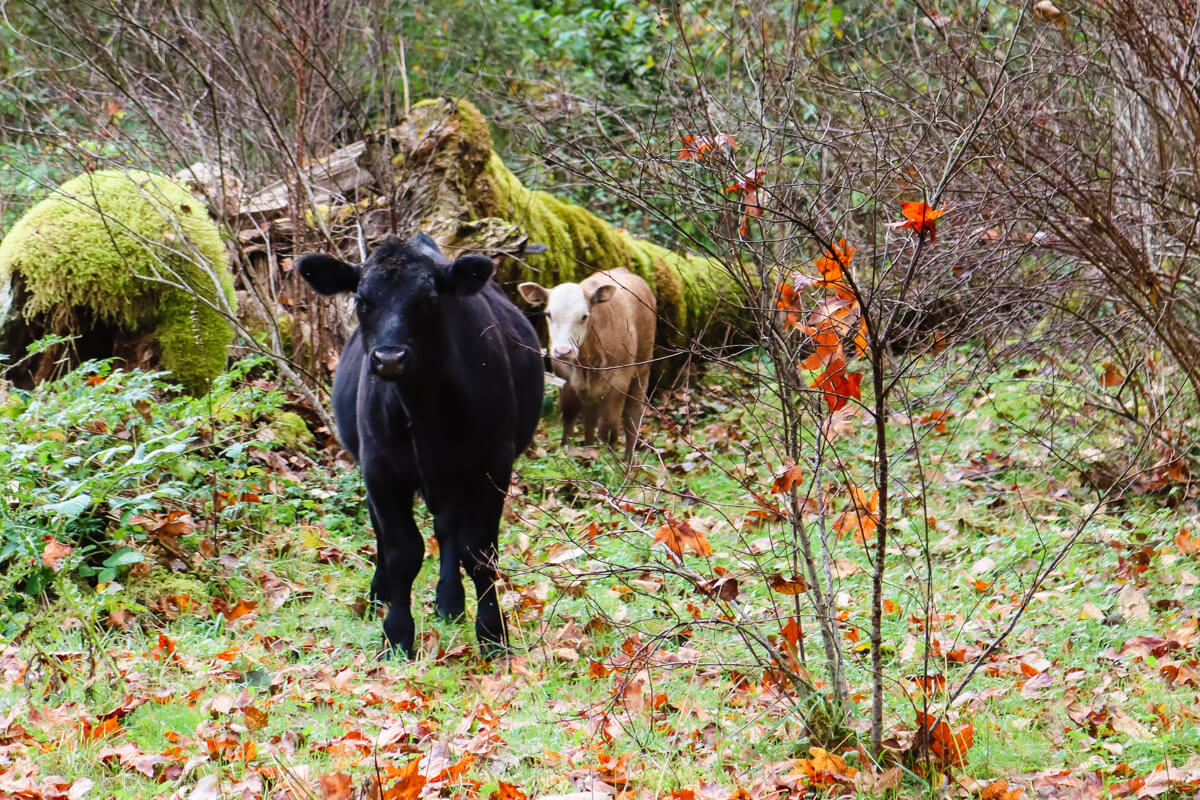Whenever I can find a way to get more income and productivity out of our land and livestock in a sustainable manner, I’m all for it. Today we’re talking about using the centuries old method of silvopasture that homesteaders of old used when they first settled the land, before the rise of big agriculture.
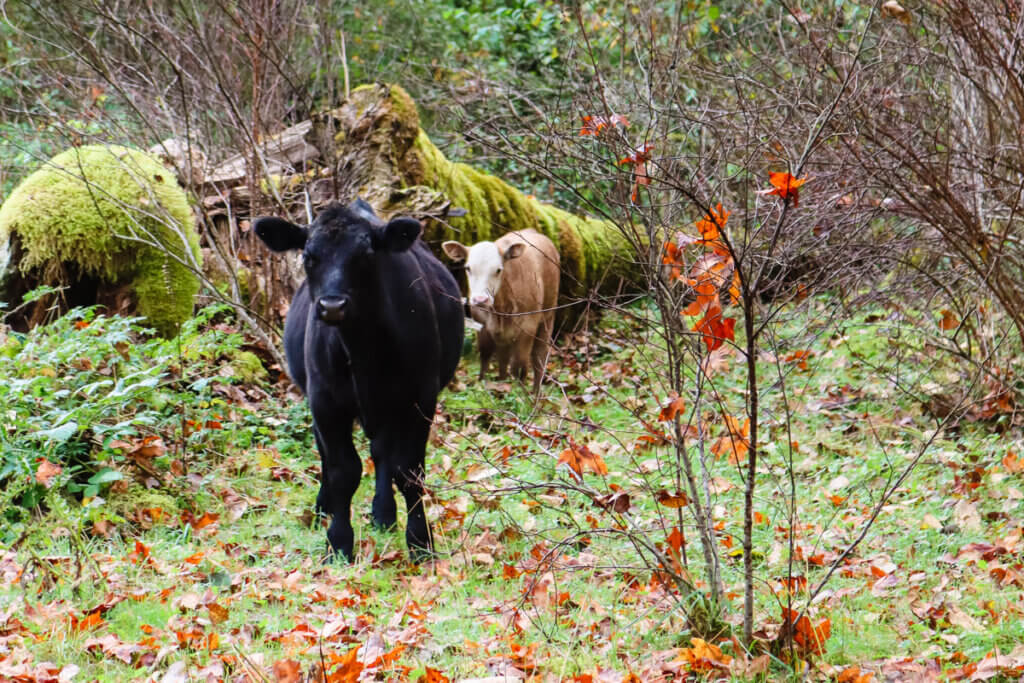
Shelby DeVore, founder of Farminence. She’s a livestock expert and an avid gardener with 20 plus earls of experience on top of her B.S. in animal and dairy science as well as an M.S. in agriculture and natural resources. So she knows her stuff which is why I’m so excited to bring her on to talk to us about using Silvopasture and Co-grazing methods to be more sustainable and productive.
Listen to the full podcast, Episode #275 Silvopasture and Co-grazing for Sustainability and Productivity of the Pioneering Today Podcast, where we don’t just inspire you, but give you the clear steps to create the homegrown garden, pantry, kitchen, and life you want for your family and homestead.
What is Silvopasture?
I’m very intrigued by using co-grazing methods to be more sustainable and productive because we do that naturally with our chickens and pigs when we have them on our pasture with our beef cattle. But I’m sure there’s a lot that we can improve on and do better. Shelby specializes in silvopasture, which I’m not as familiar with, so we’ll have her explain what it means.
Shelby: Silvopasture is a fairly new concept. Typically when we think about agriculture and raising livestock on pasture our main goal is to go in and remove trees and shrubs. We think of cattle and sheep as grazing animals and provide them with as much grass as we can.
It’s interesting because it incorporates trees into the equation, which for a lot of people is a really foreign concept because normally when creating pasture the goal is to eliminate those trees, not encouraging tree growth. So silvopasture is basically trying to get a symbiotic relationship between livestock, pasture, and trees.
Melissa: I’m intrigued because we have mixed. We have three parcels totaling 14.9 acres with about five to six of it being pasture. The other part is a mix of evergreens, primarily cedar and hemlock, cottonwood, a little bit of maple, alder. Of course, the grass doesn’t grow as thick and abundant in those areas as it does out in the pasture areas. So I guess we’ve been doing some of that silvopasture, but we were planning on taking out some of the alder and cottonwood to increase the pasture in those areas, but leaving quite a bit predominantly of the evergreen. Is that a good or bad idea?
Shelby: It sounds like you’re off to a good start. You mentioned that you have three different parcels. Are those cross fenced?
Melissa: Once parcel has our home and garden, which is just around 2 acres. Another parcel is around 5 acres and is predominantly pasture and I’d describe it as the top part. Then on the very top that’s where we have some pasture with some older maple and a few cedars. That’s just all open. The bottom portion, which is our other parcel, is fenced. We’ll rotate on and off, so we’ll give some of the pasture a break and let that grow up while they’re on the other part. That has a lot of tree culture with just a very small amount of pasture.
Shelby: Definitely sounds like you’re off to a good start. One of the key components to establishing a good silvopasture system is to have it cross fenced. That way you can get your animals around while you get your forage established under your trees. You can definitely start silvopasture from your currently wooded space.
Planning Your Silvopasture
What we recommend is to have somebody, maybe an extension agency or someone heavily involved with forestry, come to your property. A lot of times they can do this for free, especially if you can find a extension agent that specializes in forestry. Have them look at your trees, see what you’ve got and what your soil is like. See what’s going to do best with forages for your soil in your area.
When you’re planning silvopasture, part of your goal is to not only manage your animals and forages, but you want to be able to manage your timber as well. I should mention this as well. Small farmers and people that are interested in homesteading may not necessarily look at it the same way as a commercial producer would. In my case, if my animals are happy and we’re putting meat in the freezer and it’s not costing me a ton of money out of pocket, to me, that’s a profitable system. Profitable doesn’t necessarily mean that you’re making massive money off of something. If it works for you and it helps you reach your goals easier without costing you a ton of money out of pocket, then it’s profitable.

Ideally everything in your silvopasture system should be profitable for you. It should be improving and helping the other parts of the system. If you’re raising livestock, they should be healthier which means that should be more productive. Your trees should also be healthier and more productive. So should your forages.
A lot of people that are interested in a silvopasture system want their trees to also be profitable for them. So in your case, you already have a trees that you can work with. Someone that doesn’t have trees in place and maybe starting with a blank slate can determine what types of trees they would like to plant.
If you’re thinking about this in terms of your silvopasture being profitable for you, a lot of people incorporate fruit trees and do an orchard type silvopasture. Or maybe nut trees or pines or some type of fast growing timber that can be harvested in 15 or 20 years.
Challenge of Establishing New Trees
Melissa: I’ve tried planting fruit producing trees, specifically pawpaw although we’ve tried other trees, where the cattle are. But the cows, I swear, are the nosiest things in the universe. If they see us planting something they will come over and just pull it out. I actually had them caged because they were just one year old trees and they just tore down and trampled the cages and pulled out the pawpaw trees. I guess just for fun. I know they’re not trying to be mean but I was quite irritated with them. When you’re putting in young trees, especially fruit trees, do you just make sure that it’s fenced off for a period of time? Do you have any tips?
Shelby: That’s actually a really common problem. Let me tackle this a couple different ways. You mentioned they seem really curious when you plant new trees and they nibble on them, there’s actually a really good reason for that. Anytime a plant grows, it’s going to add new growth at the top of the plant. Where that new growth comes in is where a lot of your nutrients are going to be and animals know that. If given the opportunity, they’ll nibble and chose to eat on the more nutritious parts of the plant. So when you have a young plant that you’re putting in the ground, they can reach all of that really nutrient dense forage and will take advantage of that fact and eat it.
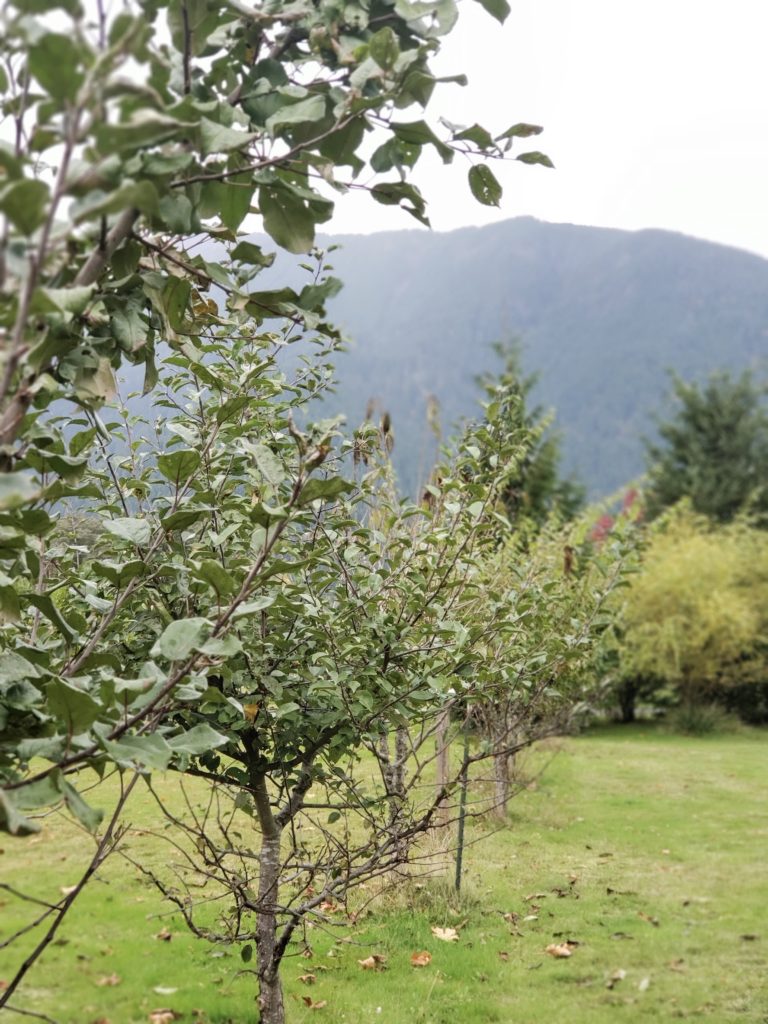
That’s probably a little bit of what was going on. Whereas your older more established trees it’s on the top and it’s out of their reach, they’re less interested. It’s a really common problem that are establishing a new silvopasture over a pastured area. One of the best way to keep animals away is to utilize cross fencing. If you can, I would section off four or five paddocks within one pasture. Then establish your orchard or timber or whatever type of tree that you’re going to put in your pasture one paddock at a time. Keep your livestock out of that one paddock for a year to give your plants time to grow without the pressure of them being grazed on.Then you can rotate to the next paddock and cycle your animals through.
I know that doesn’t work for everybody. You can go through and individually fence trees off. When you’re putting fences around the trees for livestock, give yourself at least 3 feet from the outside of the fence to any of the foliage on that tree. Another option that I’ve seen a lot of producers have good luck with is to install one strand of electric fencing. For pigs or goats place it closer to the ground. For larger animals like horses or cattle, put it near the top of the fence.
Livestock Suited for Silvopasture
Melissa: With silvopasture, are there livestock that are more suited to that type of environment? Which animals thrive the best?
Shelby: You can make any type of silvopasture work for any type of livestock. I’ve seen people do it with horses, cattle, sheep, goats, and even poultry. Chickens, turkey, pretty much anything that you can fence in and want to raise. I will say that I don’t recall seeing or hearing about anyone raising animals like llamas or alpaca, but I’m sure that you could make it work.
A lot of people, when they think silvopasture with the wooded pasture area, the first thing that comes to mind as far as what would work best as far as livestock is goats. I don’t want to say that’s wrong, but you really have to be careful when you incorporate goats into a silvopasture system. Goats actually do the best on silvopasture when you’re establishing it from a wooded space already. Goats are browsers so when you’re establishing a new silvopasture wooded area, it is a good idea to bring goats in to clean the shrubby undergrowth up and to make room for forage that will be on the ground. Once you get that forage established you want to be sure to rotate the goats out because you don’t want them to overgraze to the point that htey start looking to your trees and timber because you’re trying to manage those as well.
Melissa: Goats can be great brush clearers but they can be destructive when you want them to be.
Creating Silvopasture
Melissa: How would someone create silvopasture when starting from a wooded area versus a pastured area?
Table of Contents[Hide][Show]
Wooded Spaces
Shelby: Let’s start with someone who has a really heavily wooded space. Over the course of history here in the United States the early pioneers came through, found wooded spaces and what’d they do? They cleared it creating little homesteads, little farms. It’s actually estimated that roughly 70% the wooded space today in the United States could easily, and you can take this with a grain of salt, be turned into working and usable silvopasture. A lot of that stems from the fact that a lot of these old homesteads and farmsteads are located close by to where people are living and looking to expand their property or get started with silvopasture. At some point in the history it may have already been cleared and you just didn’t know. So a lot of wooded space is very suitable for creating silvopasture.
My advice, if your starting with heavily wooded space, walk your timber, analyze what’s out there and what you have that looks healthy, what doesn’t look healthy and consider what type of livestock you would want to incorporate your space. Certain trees are gonna work better with certain forages, which are going to work better with certain types of livestock. So you need to sit down and put some thought into it before you just got out into your woods and start cutting down random trees.
You need to consider is the amount of sunlight your forage needs in order to coexist happily with the trees. Usually you want to aim for about 50% of your ground to have access to sunlight. When you go through and look at your tree canopy, you want to keep the trees that are going to provide light shade at the ground level, not heavy dense shade. One of the least used trees in a silvopasture system is the oak family because they have a really dense canopy which provides dense shade. It’s really hard to get forages to grow successfully underneath canopies provided by these oak trees.
Ideally you want leaves that disintegrate fairly quickly and come after your ideal forage would come in. In the spring you want your grasses to come in your silvopasture system before your trees get a lot of leaves on them. Once your grasses come in pretty well, and then your leaves come in, your grass is already established and it’s not going to be struggle to get a jump-start on the growing season.
Like I said, leaves need to disintegrate fairly easily. A lot of fruit tree leaves will break down pretty quickly. Leaves from the hickory family, like walnuts and black locusts, will also break down quickly. That’s important because when your grasses reseed throughout the growing season, it’s not going to be able to seed and germinate properly if the leaves don’t break down easily. If you have a thick layer of leaf mold on the ground, you want that to really break down so that you can get a good foothold in the soil to start growing. That’s how I would look at starting silvopasture in an existing wood space.
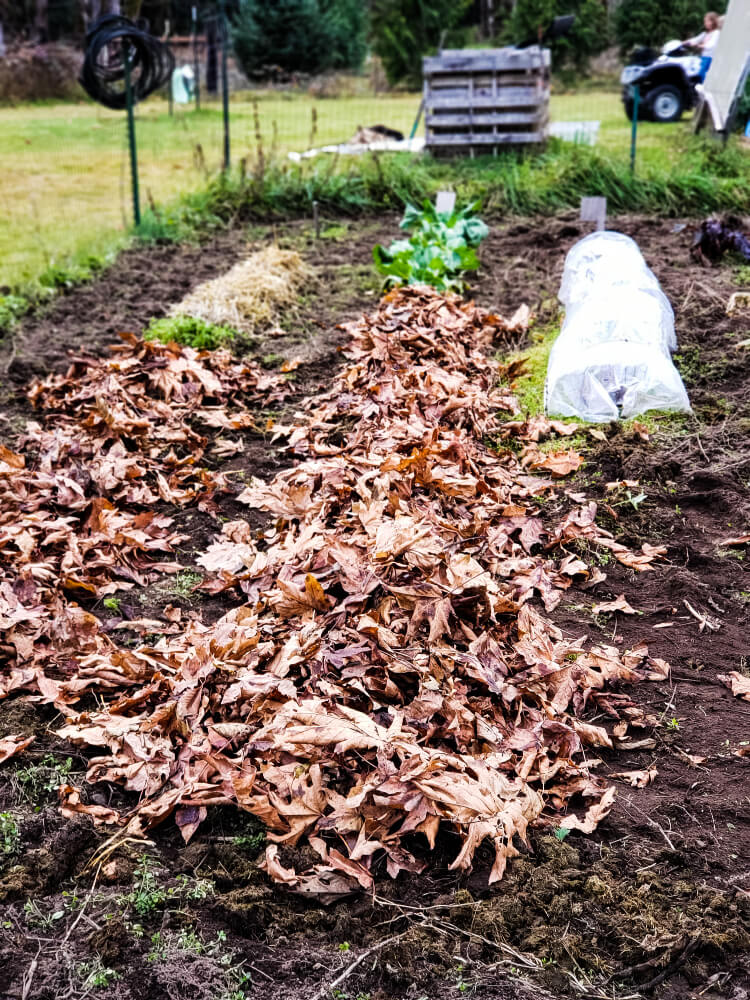
Pasture
Soil Health
Let’s look at it from the opposite end, establishing silvopasture when you have no trees and just open radiant pasture. This may be a little bit easier to plan for since you are starting with a blank slate. One of the most important things that you’ll need to do upfront is analyze your soil. Get an idea of the health of your soil before you start planting your trees. Trees take a lot more nutrients and a lot more water than grass to grow. So you want to make sure that you’re starting with the best possible soil that you can. If you need to fertilize and amend, it’s not going to hurt your grass. It’s probably gonna help it grow faster, if anything else.
Next is to determine what kind of soil you have in your area. Is it sandy? Do you have soil that is heavy in clay? Figure out which types of trees will grow best in your area. Remember, we’re all about making everything in this system happy, cohesive, and working together. That includes your trees.
Type of Soil
Spacing
Once you have an idea of your soil and types of trees you can grow, then you can start planning out spacing your trees. I’ve seen people space their trees many different ways. In silvopasture systems it really up to you. If you want to do nice neat single rows or multiple rows, or scatter plots in your pasture. There’s not really one system that works better than the other so however you want to manage it. If it’s easier for you to run a brush hog down a single row of trees then plant a single row of trees. Just make sure that you’re 50% of your ground is getting sunlight at some point during the day. That’s your main goal when it comes to spacing out trees.
When you first plant them, you’ll want to plant more than you’re going to wind up needing. That’s fine because in a year or two, if your shade is too dense at the ground, you can go through and thin our your trees. That’s a really common practice in pretty much any forestry system. So don’t feel bad in your silvopasture system if you need to thin them out.
Forages
Another thing to consider is the forages that grow in an open pasture are probably not going to grow in a silvopasture system. For example, Bermuda grass grows perfectly in full sunlight and heat. Even in almost drought conditions, it’ll grow like a champ. The moment you try to grow Bermuda grass underneath a tree, you’re going to be disappointed. You’ll most likely have to adjust the type of grass that you have. Some will take place place on it’s own. If you have legumes, timothy grass, or fescue growing in your pasture right now those will probably become some of your more predominant forages in your system once your trees get established.
You can aid that process, of course, by seeding it out yourself. I would look for rye grass, timothy, some of the shade fescue blends. A lot of those tend to perform really well in a silvopasture system because they don’t mind being shaded.
Really pay attention to the seed blends that you are buying. The reason I say that is because a lot of pasture blend mixes will advertise that they are made for full sunlight, but actually the grass seed that’s in there is better suited for growing in shade than it is for sunlight. That was the case for us a couple of years ago. We ran up to Tractor Supply and when we were reading the seed blend on the bags of seed we were comparing a couple of different bags side by side and the sunlight blend was nothing but fescue, rye grass, and clover. All of those are really well suited to growing in the shade than they do in full sunlight. Definitely pay attention to the seeds in the blend.
Melissa: My dad has always said that the grass under the conifer trees tastes more bitter which is why my cattle don’t eat it until last, when other stuff has already been consumed. Have you ever heard anything like that or have any insight on that? Or do you think it’s an old wive’s tale?
Shelby: I’m not necessarily sure that the grass tastes bitter to the cows. Remember when we mentioned the fact that, given a choice, most livestock are going to opt for the more nutritious plants and they’ll eat that first? That could be what’s going on. You have to be careful in a silvopasture system to make sure that you’re managing your forages properly along with your trees, because your trees have these really deep root systems. If you don’t keep your forages in fertile soil, the trees are going to suck a lot of those nutrients out and prevent your grasses from getting it. And in a silvopasture system that’s not managed properly.
A lot of times that’s exactly what will happen. You may get some grass that will grow, but it’s not going to be nutrient dense grass, like what you’re animals are looking for. In the same space, if you have grass that’s growing away from trees and not competing for nutrients because they want those nutrients. When the pickings get slim, they’ll come and eat the stuff that isn’t as nutrient dense.
Incorporating Co-grazing
Melissa: With co-grazing and silvopasture, are there any benefits and what are the things that people should know about it?
Shelby: It’s all about becoming more sustainable in the way that we look at agriculture. I’m sure that this is not a shocker, traditional agriculture system we’re learning are not eco-friendly nor are they sustainable. So we need to start thinking about how we can practice agriculture and still be really productive but do this in a sustainable way. Silvopasture and co-grazing are amazing management practices that allow us to be productive in a way that is sustainable and profitable.
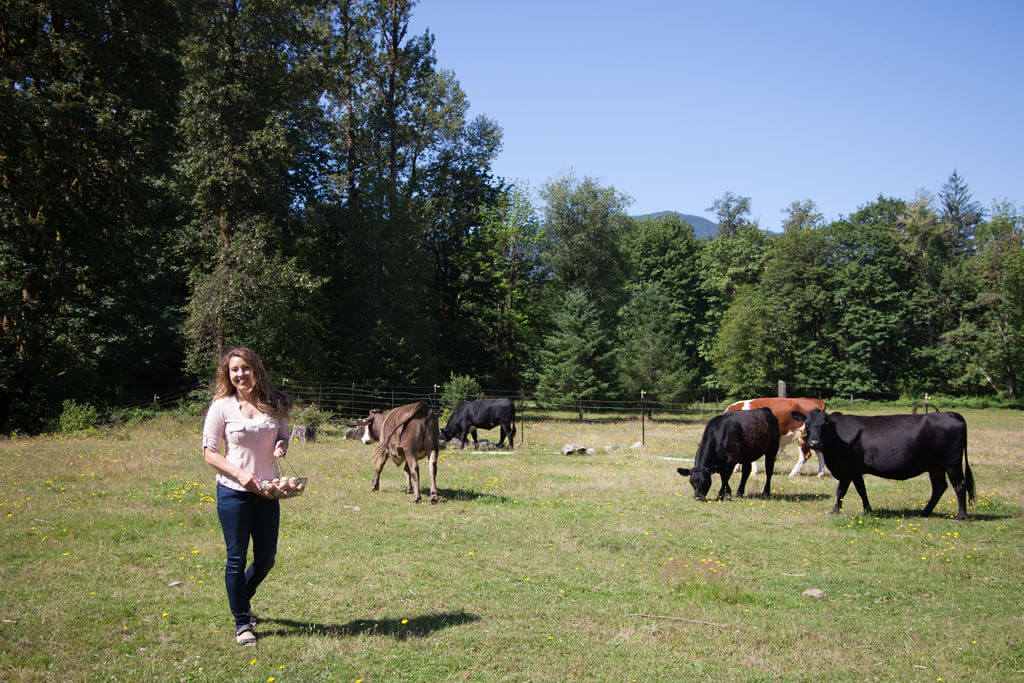
Benefits
One of the major benefits of silvopasture is not only is it more eco-friendly and sustainable, but you’re going to see improved animal health. You’ll also be able to increase your income in the same acreage, if that’s something your interested in.
For example, for someone who wants to raise pigs and they decide they want to do silvopasture and decide they want to incorporate apple trees into their silvopasture system. So now they have pigs that they can produce on the silvopasture system but they also have apples that they can produce which would make an additional source of income. They could even advertise their pigs in a different way that would potentially increase the amount of money that they could get per pig. So they be able to advertise their pigs as apple fattened pigs…this adds some value to that by raising your pigs in these apple orchards, where their eating fallen apples that you’re not going to use anyways. So you’ve increased your income that way.
I mentioned that you’re animals are going to be healthier. Anytime we raise animals on open pasture, heat stress becomes an issue. A lot of farmers and producers that are heavily involved with raising livestock know exactly what I’m talking about. Heat stress can affect your animals in so many different ways. If you’re raising animals for meat, it will slow down how fast your animals grow, which is not a good thing when you’re raising animals for meat and trying to do it frugally and not spend a ton of money on feed or hay for them.
Raising animals in silvopasture you automatically put them in an environment that is better suited for them to not have to deal with heat stroke. A good rule of thumb is that it’s usually about 20 degrees cooler in the shade than it is in open sunlight. So when you put your animals in silvopasture, the majority of the pasture that they’re on has ample shade. We want about 50% of our pasture to be shaded in a silvopasture system. That means it’s very easy for your animals to get out of the heat, get out of the sun without coining off the pasture. You’re animals can still be out there and can still graze. They can still do their thing but they’re now doing it in the shade where they’re comfortable.
Another benefit of a silvopasture system you’re also going to enhance the wildlife habitat where I’m trying to raise livestock, but in reality you do. Because when you have wildlife that come out to your pastures or your silvopasture, where your animals are, that’s a sign that the ecosystem is thriving and it can sustain additional animals on it. Wildlife won’t come to that space if it’s not able to eat or graze in that area. When you see wildlife on your pasture or in your slivopasture, that’s a really good sign that the whole ecosystem is thriving.

Co-grazing is not as new of an idea as maybe silvopasture, but it’s still a really sustainable management practice that has a ton of benefits for your livestock. Co-grazing is a fancy way of saying we raise more than one type of livestock in the same space, and it doesn’t necessarily have to be in the same space at the same time .You can definitely rotate animals out. It’s still technically co-grazing.
I’ve seen this done a lot with goats and other species of livestock and that’s for a good reason. Goats are browsers. They’re going to eat the shrubby plants in a pasture before they’ll eat the grasses that the cattle or sheep or horses are going to go for. So when you put those two types of livestock in the same space, they’re not going to complete with each other for food. They’re actually going to compliment one another and focus on eating different types of plants in your pasture.
Which means, with co-grazing you can increase the number of livestock that you can raise in one space without really increasing your costs or having to change a whole lot of stuff because you’re just taking advantage of the fact that there are numerous types of forages in a pastured area. This is really beneficial to your livestock’s health. One of the big concerns when you raise livestock are dealing with internal parasites or worms. Think tapeworms, roundworms, hookworms. Nobody wants to deal with those. (Livestock can expose you to parasites, so it’s important to learn how to get rid of parasites in your body, too.) If it’s not managed properly, internal parasites can become a really expensive cost for you.
De-worming your animals costs money. If you don’t do more and you end up with an infestation, you could potentially lose animals to those internal parasites. One of the beauties of co-grazing is that you take advantage of the fact that internal parasites are species specific. So worms that a cow gets are not the same kind that sheep or goats would. When you put two different species on the same pasture and they start to shed eggs from these internal parasites in their feces the eggs get in the grass or forages that your animals are going to eat. The second species will come in and consume some of those eggs but they won’t survive in that second species.
It’s not their niche species that they want to live in so you’re actually killing those internal parasites without the use of worming your animals just by using a co-grazing system. You can achieve this same goal by rotating your animals out or keeping them all in the same pastured space together at the same time. Either way you still get that benefit from co-grazing.
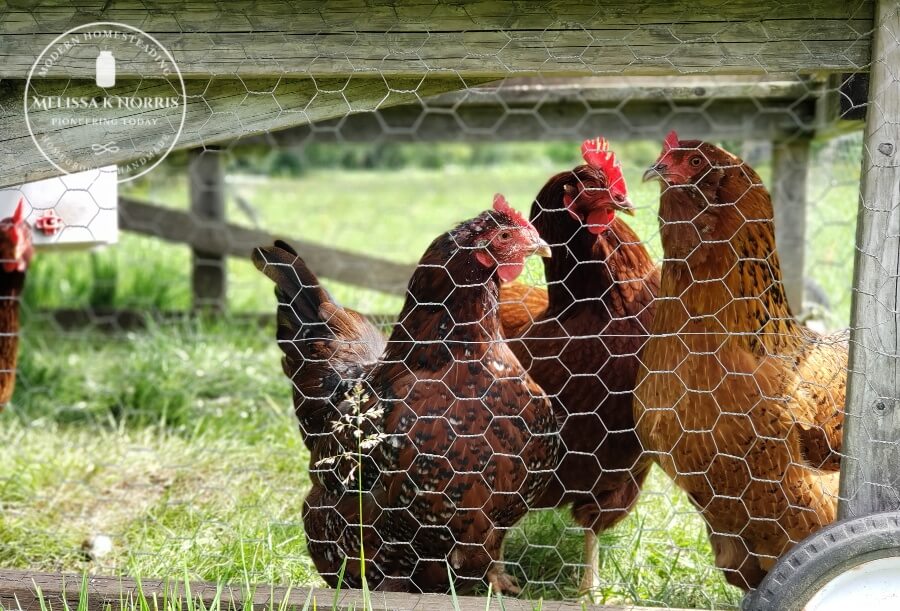
Melissa: I’ve seen this with my chickens and cows. The cows follow the chickens. Where the chickens have been the grass is lush and green. They’ll eat the seed heads that the cows don’t. I actually have less of the weeds that I don’t want in the pasture. And then the cattle go behind and eat more the things that the chickens don’t seem to want so it’s been really fascinating to watch that. I didn’t even know about the parasite load. I hate to use conventional worming, especially in animals that we eat.
Shelby: I don’t know how many people are aware of this, hopefully a lot, but in the agricultural and livestock industry there is an issue with internal parasites becoming resistant to worming medications. That’s really from overuse of worming. Back in the day, around 20 years ago, my vet telling me that we needed to change our worming system that we had used. She recommended every six weeks, rotate out your de-wormer and mare sure you stay on a strict schedule. Worm your horses every six weeks. Then the following year she said she was pretty sure we’ve been doing this wrong. We only need to be de-worming as we need to do it.
That occurred across the entire industry. People started to figure out that we had been way over worming and subsequently creating these pockets of internal parasites that are resistant to de-wormers. We only have so many de-worming medications to pick from, and some of these pockets are resistant to all of them. Which is not a good thing. Co-grazing originated as way to combat that instead of focusing on trying to come up with new wormers, it was a way that we can control internal parasites naturally without medication.
Silvopasture eBook
If you’d like to learn more about silvopasture Shelby has written a free eBook. Snag it here.
